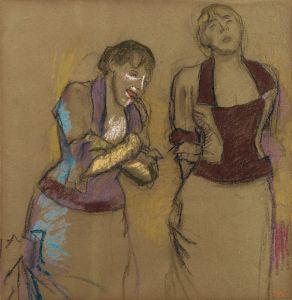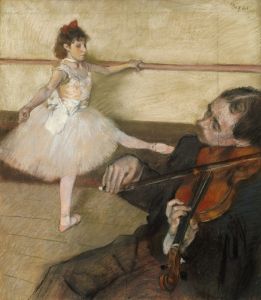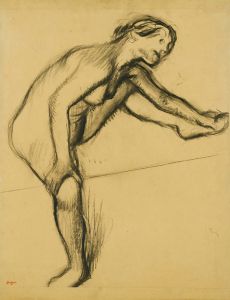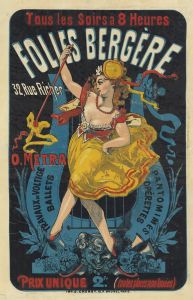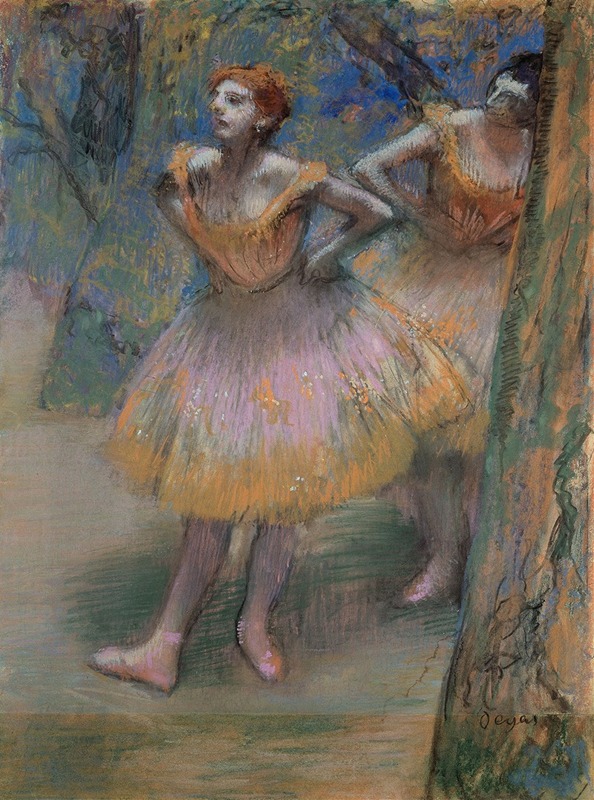
Two Dancers
A hand-painted replica of Edgar Degas’s masterpiece Two Dancers, meticulously crafted by professional artists to capture the true essence of the original. Each piece is created with museum-quality canvas and rare mineral pigments, carefully painted by experienced artists with delicate brushstrokes and rich, layered colors to perfectly recreate the texture of the original artwork. Unlike machine-printed reproductions, this hand-painted version brings the painting to life, infused with the artist’s emotions and skill in every stroke. Whether for personal collection or home decoration, it instantly elevates the artistic atmosphere of any space.
Edgar Degas, a prominent French artist associated with the Impressionist movement, is renowned for his depictions of dancers, capturing the grace and dynamism of ballet. One of his notable works, "Two Dancers," exemplifies his fascination with the ballet and his innovative approach to composition and technique.
"Two Dancers" is a pastel drawing that showcases Degas's mastery in portraying movement and the human form. The artwork features two ballerinas, captured in a moment of rest or preparation, a common theme in Degas's work. Unlike many of his contemporaries who focused on the performance aspect of ballet, Degas often depicted dancers behind the scenes, offering a more intimate and candid glimpse into their world.
Degas's use of pastel in "Two Dancers" highlights his skill in manipulating the medium to achieve a soft yet vibrant effect. The pastel allows for a rich layering of colors, creating depth and texture that bring the figures to life. The choice of pastel also contributes to the immediacy and spontaneity of the piece, as Degas could quickly capture the fleeting moments of the dancers' movements.
The composition of "Two Dancers" is carefully constructed, with a focus on the interplay of light and shadow. Degas often employed unusual perspectives and cropping in his works, influenced by the burgeoning field of photography and Japanese prints, which were gaining popularity in Europe at the time. This approach is evident in "Two Dancers," where the figures are positioned in a way that suggests a snapshot of a larger scene, inviting viewers to imagine the bustling activity of the rehearsal studio beyond the frame.
Degas's interest in ballet was not merely aesthetic; it also reflected his broader exploration of modern life and the human condition. The ballet, with its rigorous discipline and ethereal beauty, served as a microcosm of the tensions and contradictions inherent in contemporary society. Through works like "Two Dancers," Degas captured the duality of the dancers' existence—their grace and elegance on stage contrasted with the physical demands and exhaustion behind the scenes.
"Two Dancers" is part of a larger body of work by Degas that focuses on ballet, a subject he returned to repeatedly throughout his career. His fascination with dancers was not limited to their performances but extended to their everyday routines, rehearsals, and moments of rest. This focus on the mundane aspects of a dancer's life was revolutionary at the time and contributed to Degas's reputation as a keen observer of modern life.
Today, "Two Dancers" is celebrated for its technical brilliance and its insightful portrayal of the world of ballet. It remains a testament to Degas's innovative spirit and his ability to capture the beauty and complexity of human movement. The artwork continues to be studied and admired, reflecting Degas's enduring influence on the art world and his unique contribution to the Impressionist movement.











